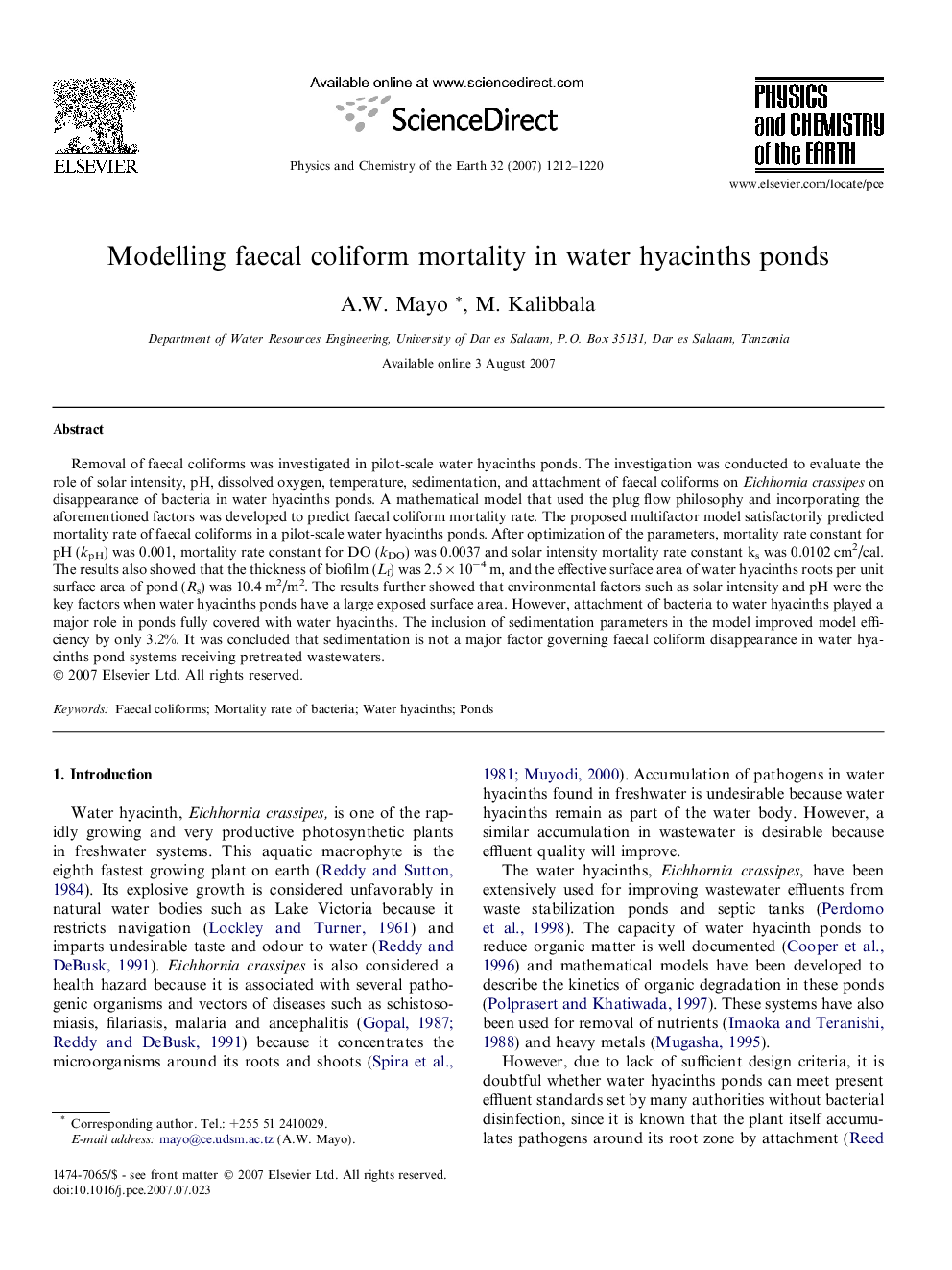| Article ID | Journal | Published Year | Pages | File Type |
|---|---|---|---|---|
| 4721825 | Physics and Chemistry of the Earth, Parts A/B/C | 2007 | 9 Pages |
Removal of faecal coliforms was investigated in pilot-scale water hyacinths ponds. The investigation was conducted to evaluate the role of solar intensity, pH, dissolved oxygen, temperature, sedimentation, and attachment of faecal coliforms on Eichhornia crassipes on disappearance of bacteria in water hyacinths ponds. A mathematical model that used the plug flow philosophy and incorporating the aforementioned factors was developed to predict faecal coliform mortality rate. The proposed multifactor model satisfactorily predicted mortality rate of faecal coliforms in a pilot-scale water hyacinths ponds. After optimization of the parameters, mortality rate constant for pH (kpH) was 0.001, mortality rate constant for DO (kDO) was 0.0037 and solar intensity mortality rate constant ks was 0.0102 cm2/cal. The results also showed that the thickness of biofilm (Lf) was 2.5 × 10−4 m, and the effective surface area of water hyacinths roots per unit surface area of pond (Rs) was 10.4 m2/m2. The results further showed that environmental factors such as solar intensity and pH were the key factors when water hyacinths ponds have a large exposed surface area. However, attachment of bacteria to water hyacinths played a major role in ponds fully covered with water hyacinths. The inclusion of sedimentation parameters in the model improved model efficiency by only 3.2%. It was concluded that sedimentation is not a major factor governing faecal coliform disappearance in water hyacinths pond systems receiving pretreated wastewaters.
